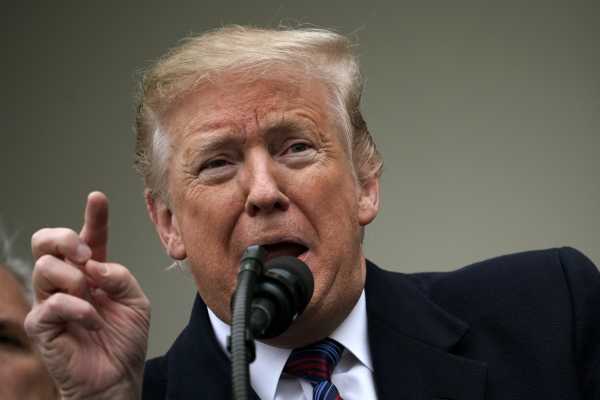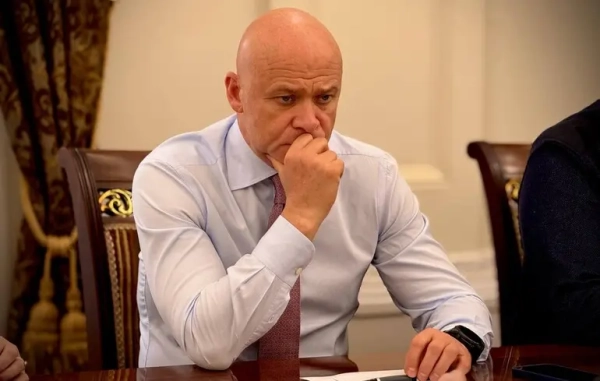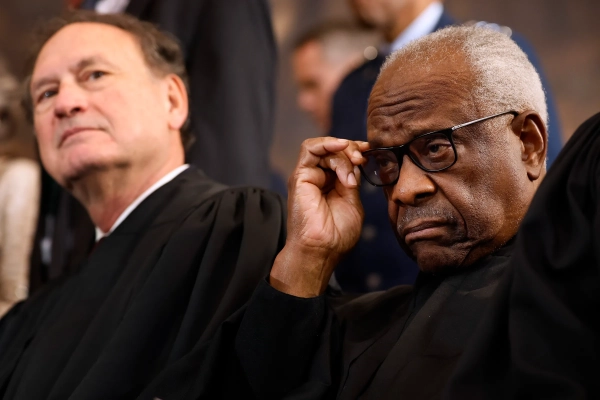
President Donald Trump has decided to punt the ongoing government shutdown fight to a working group to make a deal (as soon as this weekend) on border security, and possibly other immigration issues.
The problem with this strategy is right there in that sentence: The reason that the government has shut down, and that Congress has failed to pass any immigration bills despite multiple attempts since Trump’s inauguration, isn’t because people who aren’t Trump are failing to make a deal. It’s because Donald Trump won’t commit to accepting a deal — and he can’t even commit to what, exactly, he wants to make a deal about.
Vice President Mike Pence, who is reportedly heading the working group, has been undermined by the president as recently as this week when trying to make a deal with Democrats — when Trump shut down Pence’s offer to accept $2.6 billion in wall funding instead of $5.6 billion. Meanwhile, Trump told reporters today he is willing to keep the government shut down for months or years if that’s what it takes to get what he wants.
The announcement of the working group is likely to fuel speculation that the White House is planning to compromise. It’s clear that someone out there is floating a trial balloon on a deal that would fund border barriers in exchange for legalizing immigrants currently protected under the Deferred Action for Childhood Arrivals (DACA) program — a proposal that has jumped from the editorial pages of major newspapers to Trump whisperers on Fox News, with both Pence and Sean Hannity opening the door to a wall-for-DACA deal on Thursday night.
But we’ve been here before. And every time this happens, the deal falls through because of Donald Trump.
Donald Trump killed the 2018 DACA deals
There is a very simple reason to be skeptical that Donald Trump is willing to make a deal on immigration: Donald Trump keeps saying that he wants to make a deal on immigration, and then keeps refusing to budge from a list of demands that Democrats have made clear they won’t agree to.
Trump and other Republicans are engaging in a bit of revisionist history about this; they’re claiming that they wanted to make a deal last year, but Democrats walked away because the court fight over DACA reduced their feeling of urgency.
Here’s a refresher of what actually happened in late 2017 and early 2018.
- September 5, 2017: Trump (via Jeff Sessions) announces an end to the DACA program, with new protections being frozen immediately and existing protections sunsetting en masse beginning on March 5, 2018. Trump tweets that DREAMers shouldn’t worry and that he’s giving Congress six months to make a deal; lawmakers in both parties agree the issue is urgent.
- September 13, 2017: Trump meets with “Chuck and Nancy.” Pelosi and Schumer leave the meeting claiming Trump has agreed to sign a bill that would legalize DACA recipients, and hasn’t insisted on anything in return. The White House denies this account.
- October 7, 2017: The White House releases an 11-page “framework” containing its “priorities” in an immigration bill, which include not only a border wall but an overhaul of legal immigration (including drastic reductions to family-based immigration and the end of the diversity visa lottery) and asylum law. Administration officials don’t identify any specific policies as dealbreakers — implying that all of them are necessary. In return, they say they might support a deal to offer legal status to DREAMers — but don’t commit to supporting citizenship for them.
- January 9, 2018: With a government-funding deadline looming, Trump hosts a bizarre, televised Oval Office meeting with members of both parties, in which he tells them that he will sign an immigration deal: “When this group comes back, hopefully with an agreement, I am signing it. I will be signing it. I’m not going to say, ‘Oh, gee, I want this or I want that.’ I will be signing it.” After the cameras are shut off, the Department of Homeland Security distributes another several-page list of demands; Trump reportedly tells attendees to ignore the document.
- January 9, 2018 (evening): Judge William Alsup issues an injunction against Trump’s efforts to end DACA, requiring the Department of Homeland Security to start accepting current DACA recipients’ applications for renewal.
- January 11, 2018: Sens. Dick Durbin (D-IL) and Lindsey Graham (R-SC) brief Trump by phone over their proposal for a deal. Trump is reportedly enthusiastic. When they brief him in-person that afternoon, he is reportedly flanked by immigration hardliners and is much more truculent — including, infamously, rejecting the idea of extending protections for people with Temporary Protected Status because they come from “shithole countries.”
- January 16, 2018: Then-House Majority Leader Kevin McCarthy leaves a meeting telling reporters that because of the court ruling, there’s now “no deadline” on DACA and much less pressure to make a deal.
- January 19, 2018: On the last day before the government is set to shut down, Chuck Schumer visits the White House to meet with Trump. According to reports released later, Schumer leaves the meeting believing that he has a deal with Trump: $25 billion for a border wall in exchange for a path to citizenship for Dreamers. John Kelly reportedly calls Schumer later that afternoon to say the deal is off. The government shuts down at midnight that night, thanks to the refusal of Senate Democrats to vote “yes” on a funding bill that doesn’t address DACA. The shutdown lasts over the weekend, before Democrats relent in exchange from a promise from Mitch McConnell to debate immigration.
- January 25, 2018: The White House releases a one-page document of “four pillars” that it says constitute its demands for any deal: DACA legalization, border security (which now includes legal changes to restrict asylum), ending “chain migration” (family-based immigration), and ending the diversity visa lottery. Democrats have already said that family-based immigration cuts would be a dealbreaker.
- mid-February 2018: The Senate spends a truncated week debating immigration, at the end of which it votes on four bills — none of which get the required 60 votes to beat cloture. The one that comes closest is a bipartisan bill that Trump and the White House have vociferously opposed, claiming it violates their “pillars.” The bill the White House endorses (but doesn’t exactly whip for) gets 60 no votes.
- April 1-2, 2018: Trump, in the midst of tweeting about a migrant “caravan” that has just entered Mexico, tweets “NO MORE DACA DEAL!” and “DACA is dead because Democrats didn’t care or act.”
- May 2018: A group of moderate and vulnerable Republicans attempts to force a vote on a DACA fix in the House of Representatives. McCarthy warns them that the vote would hurt the party in the midterms.
- June 2018: The House votes on, and fails to pass, two immigration bills in two weeks. Both of them were designed to satisfy the “four pillars” framework, but neither can gain the support of both the moderates in the caucus and the conservative Freedom Caucus hardliners.
It’s absolutely true that after the January 2018 injunction, members of Congress began to voice the position to Hill reporters that the court case made it less urgent for them to address DACA. But it was primarily Republicans — starting with McCarthy in January — making this argument, because they were wary of taking a tough vote on immigration.
And they were wary of taking a tough vote because they didn’t have political cover from the president.
The problem with any working group Trump isn’t in is that Trump isn’t in it
The future is not predetermined. People change. Maybe Trump, this time, will be interested in making a deal on immigration.
But it’s Trump, not Pence or anyone in Congress, who needs to show that he’s willing to do that in order for a deal to get done.
Pence has already tried to negotiate to end the shutdown. He reportedly approached Schumer last week with an offer to reopen the government in exchange for $2.6 billion in wall funding. Reportedly, at a meeting earlier this week, Pence confronted Schumer over not responding to the offer. According to the Washington Post, Schumer responded by appealing to Trump — who overruled his own vice president:
Why, exactly, should Schumer negotiate in seriousness with a Pence-led working group, when it’s not clear that Pence speaks for the president?
Donald Trump has said before that he would be willing to sign a deal other people negotiated. But Donald Trump’s idea of what constitutes an acceptable “deal” has consistently either not been clear, or been clearly far to the right of what a bipartisan Trump-less agreement would look like.
Democrats aren’t willing to give Donald Trump wall money without getting anything in return. That’s why the “wall for DACA” trade appeals so much to pundits — it represents Trump getting something he wants and Democrats getting something they want. But Trump himself refuses, at every turn, to signal a willingness to accept that deal — in fact, he said Friday that he would prefer to wait until the Supreme Court rules in the court case.
Indeed, whenever Trump does get into specifics, it’s to add more demands to what constitutes “border security.” In the letter to Congress he sent before the meeting, he insisted that a shutdown deal include revisions to asylum law to make it easier for the federal government to deport unaccompanied Central American children and to detain families for the months or years it takes for their asylum cases to be completed.
This is how Trump negotiates. He asks for what he wants, and eventually he finds a way to get the other side to cave. But the other side isn’t caving. And Trump appears allergic to saying that he will accept something that the other side wants. Until he gets over that allergy, all the meeting groups in the world can’t get a bill signed.
Sourse: vox.com






